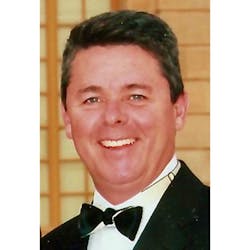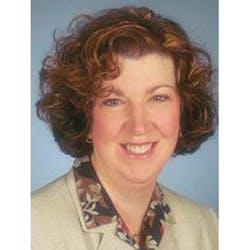Angling for air, surface viral warfare
As an outbreak of COVID-19 mushroomed into a global pandemic, public reactions outside of the healthcare community ranged from panic buying to rebellion against recommended practices for protection and prevention. Within the healthcare community, however, reactions by clinicians and administrators alike ranged from frustration about product access to consternation about public reactions.
Arduous but not Sisyphean.
While clinicians and administrators continue to carry out their duties and responsibilities as the pandemic slogs on through the start of another year, they now more than ever must count and rely on Supply Chain expertise to evaluate devices, products and technologies to make more informed buying decisions.
As with any crisis or disaster, troubled times bring out the best and brightest in people but also draw out the dim and dishonorable who strive to capitalize on the misfortune of others for personal gain.
To help Healthcare Purchasing News readers become more informed purchasers of air and surface cleaning and disinfection devices and products, HPN recruited more than a dozen executives with varying backgrounds in infection prevention, medicine and sterile processing at 12 of the leading companies that supply ultraviolet light devices and equipment and advanced clinical formula disinfectants (products generally inaccessible to the general public and instead targeted for healthcare organizations) to share useful and valuable insights.
HPN specifically asked them to cut through the hyperbole and jargon cluttering the context of what truly informed buyers need to know to make the optimal decision for them and their facility(ies). Curiously, most of the experts provided recommendations and suggestions in sets of three or four without having been prompted for a precise number.
Counting the options
“As Dr. William Rutala is fond of saying, a ‘bundle’ approach is necessary to truly control the spread of infections in most settings,” St. Clair noted. Rutala, Ph.D., M.P.H., serves as Professor, Division of Infectious Diseases, Department of Medicine, and Director and Co-Founder, Statewide Program for Infection Prevention and Epidemiology at University of North Carolina School of Medicine, Chapel Hill. Back in May 2017, Rutala retired as Director, Hospital Epidemiology, Occupational Health and Safety Program at UNC Health Care System.
St. Clair stresses that disinfection can occur only after cleaning an area via four techniques.
1. Spraying, Waiting and Wiping. “As the most basic approach to disinfection, using an appropriate EPA-registered chemical disinfectant in a spray bottle or in a pre-soaked wipe is currently ‘the standard of care’ in most environments,” St. Clair indicated. “It can generally be used while a space is occupied by others without too much concern about exposing oneself or others to harmful vapors or chemicals, and often the disinfectants used can be quite inexpensive per unit volume.
“The caveats are that the only surfaces actually disinfected are those on which the chemical has been sprayed and has been allowed to sit, wet and undisturbed, for the necessary contact time of the disinfectant (1-10 minutes),” he continued. “Since that limitation is very real outside testing laboratories, this method generally results in less than 50 percent of pathogens being killed on surfaces.”
2. “Electrostatic” Spraying. “Using spray systems that electrically charge droplets of chemical disinfectants has become increasingly common in the last year,” St. Clair reflected. “These devices produce a cloud of droplets of varying sizes to try to envelope the targeted surfaces with a wet film that will stay wet for the required contact time of the disinfectant being used. Depending on the requirements of the disinfectant being used, the surfaces may need to be wiped down after the contact time. These devices, often called ‘electrostatic guns’ – and improperly called ‘foggers’ from time to time – are superior to normal spray bottles because they promote a wider distribution of the disinfectant than one could normally accomplish with a manual sprayer. So when properly used, electrostatic spraying is very likely to be more effective than manual spraying and wiping.”
But St. Clair expresses caution with two key alerts.
“The caveats with this technology are related to the fact that it is still a spray technology, so spending the time to allow all surfaces to actually get wet and stay wet for the required contact time is a challenge,” he indicated. “If one watches videos of people using these spray devices, often one sees the nozzles being waved around very quickly. That approach might give some observers a sense of protection, but in fact that would be a false sense of security – the disinfectant isn’t being allowed to function properly. One high-quality manufacturer of these devices that actually received a rare EPA registration for the electrostatic application of their disinfectant is required, according to the EPA ‘Master Label,’ to spend at least five seconds per square foot of surface area. So a simple conference table that is 10 feet long and five feet wide requires more than four minutes of spraying just to properly disinfect the top surface and parts of the underside.”
St. Clair urges the healthcare professional to protect himself or herself, too.
“The other major caveat with electrostatic spraying is that the person applying it is generally required to wear full [personal protective equipment] to reduce the inhalation and exposure risks from being near the cloud of small droplets,” he said. “Any ‘overspray’ might increase the possibility of helping to kill pathogens in the air, but the droplet sizes tend to settle relatively quickly. That overspray also then raises the risk whenever that approach is used in occupied common areas, for instance – bystanders can be exposed easily. And the ‘advanced clinical formulas’ used in institutional settings are more likely to be irritants than those chemical disinfectants found in consumer-oriented stores.”
3. UV/UV-C Light. “Properly built, modern UV/UV-C light fixtures and robots have proven to be very useful when one wants to sanitize (versus disinfect) many surfaces in a space in a relatively short period of time,” St. Clair observed. “The labor required to do so is minimal, and most systems have record-keeping capabilities that let the institution know how often the asset has been utilized. When supplied with sensors that can be spread around a room, the UV/UV-C dosage is more likely to be effective at sanitizing the spaces in complex rooms (with equipment, furniture, etc.).”
St. Clair acknowledges that UV/UV-C systems come with their own caveats, which generally include costs – both capital and maintenance, the trade-off between efficacy and material compatibility – especially in complex spaces, and in some cases, safety.
“The fact that UV/UV-C systems are not subject to regulation by the EPA or FDA mean that efficacy claims are often made that are limited to very specific and very simplified situations,” St. Clair cautioned. “The laws of physics apply – effectiveness is generally line-of-sight and diminishes by the square of the distance between the source and the target. Shadowed surfaces, including those surfaces that are essentially parallel to the light path, will get little or no benefit from the light. While there is potentially a little benefit from light bouncing off walls, etc., the distance issue then becomes paramount since the rays need to travel to the wall and bounce back some distance.”
St. Clair offers this example: “A surface three feet away will receive four times the energy of a surface six feet away, and nine times the energy of the surface nine feet away. That means that delivering enough energy to effectively kill pathogens at nine feet requires the surface three feet away to absorb or reflect nine times the energy needed to kill pathogens. That difference is what contributes to material compatibility issues, particularly with many types of plastics.
“UV/UV-C systems will sanitize surfaces – reduce the bio-load on many of them, with some surfaces being essentially devoid of viruses and vegetative bacteria (probably leaving spores) and some being essentially untreated, depending on the complexity of the surfaces in a room,” St. Clair assured. “By moving the light source(s) around a room a few times, the level of sanitation might well rise to disinfection – 99.99 percent – for pathogens other than spores, but then the advantage of time is greatly diminished and material incompatibility with devices and furniture in the room might become more of an issue.”
Understanding exactly how a UV/UV-C light system was tested is critical when listening to kill-rate claims, according to St. Clair. “If a 99.99 percent kill rate is claimed, what exactly did that test environment look like? Were the biological indicators placed perpendicular to the light or parallel to it – or in shadows, and how far away were they? Then consider the surfaces and spaces in which you will use the lights – how real-world were the tests for your environment?” he asked.
4. Fogging & HPV. St. Clair considers aerosolizing (fogging) or vaporizing a disinfectant in an enclosed space “the newest regulated disinfection technologies – and the most efficacious for ‘whole room disinfection.’
“Depending on whether the approval being sought is ‘sporicidal’ or ‘sterilant,’ either the EPA or the FDA [is] involved in setting the parameters of [Good Laboratory Practice] testing used,” he said. “The highest kill rate normally assigned by the agencies – if reduced to percentages – is 99.9999 percent of bacterial spores. They do not allow a claim of 100 percent.”
Fogging differs from spraying in significant ways, according to St. Clair, starting with droplet size. “Typically, a true fogger will dispense a reasonably uniform plume of chemical droplets under 10 microns; electrostatic sprayers droplets are about 40 microns or larger,” he noted. “That size difference allows a number of advantageous things to happen: Concentration of active ingredients in increasingly small droplets as the water in the disinfectant evaporates before the droplet falls; the potential vaporization of an active ingredient to aid in the destruction of the pathogens and to penetrate into crevices; and the ability to kill pathogens on all surfaces while keeping all those surfaces in the space dry.”
St. Clair indicates that fogging systems are often referred to as “dry mist foggers” for a reason.
“The close interaction between a fogger and its disinfectant is the reason that the EPA will only register a combination of a specific machine design and a specific disinfectant – both the fogger and the disinfectant matter,” he clarified. “Vendors cannot legally claim that their fogger, for instance, has a 99.9999 percent kill rate against spores when using any disinfectant unless the EPA registered that unique combination. That requirement allows customers to be comfortable that the efficacy of a fogging system will deliver the results they seek.”
Meanwhile, just as the three EPA-registered fogging systems that use a hydrogen peroxide-based disinfectant, hydrogen peroxide vapor (HPV) systems are able to claim a 99.9999 percent kill (inactivation) against spores and other pathogens, St. Clair continued. “HPV systems use highly concentrated hydrogen peroxide as a source of vapor that fills a room without creating an aerosol of any type. Like the fogging systems, they rely on a specific formulation of the disinfectant to create reliable results.”
Purchasers should pay close attention to the expected “turnaround time” for spaces being treated, St. Clair advises. “Since the most common systems all rely on hydrogen peroxide and all create a vapor at some level, the space being treated has to remain closed until it’s either actively vented to the outside or until the H2O2 vapor has naturally broken down into oxygen and water vapor. But in that time, essentially all surfaces in that space have been totally disinfected without any significant labor beyond the normal cleaning of the space,” he added.
As with any investment in devices, products and technology, cost must be taken into account.
The UV/UV-C systems are typically the most expensive to purchase and to operate, according to St. Clair, followed by the HPV systems, both in terms of equipment, maintenance and consumables. While a wide range of system prices across vendors exists, the fogging systems are significantly less expensive on average than the UV/UV-C and HPV systems. Most – but not all – electrostatic sprayers are much cheaper than the fogging systems and can use a wide variety of disinfectants with different characteristics and costs, he continued. Not surprisingly, the spray-and-wipe approach is cheapest – and the least effective overall – especially if one doesn’t count labor costs, he added.
Still, a modular strategy makes the most sense, according to St. Clair.
“In total, the tradeoffs tend to be overall efficacy, cost and time – not of a specific disinfectant, but as a result of its application in a space,” he summarized. “Low-risk and occupied spaces might need only manual spray and wipe, larger spaces that can’t be easily isolated might benefit most from an electrostatic sprayer approach, ‘normal’ hospital rooms and spaces might be best sanitized with a quick UV/UV-C treatment, and terminal disinfection of isolation rooms, [operating rooms] and the like might be best with fogging or HPV treatment.”
Being instinctual
First, define the goal of the project. “Are they looking at air disinfection, surface disinfection, or a combination of both?” Guzman questioned.
Second, where are they looking to apply UVC technology? This may span patient rooms, ORs, common areas, HVAC systems, etc. Within that framework, Guzman encourages asking if there are any time constraints? “If they are looking at a patient room in a high turnover hospital with a full census, they will want to minimize the cycle time,” he indicated. “A powerful mobile unit or a fixed mounted system would keep the cycle times short. If they are looking at a patient room at a long-term care facility, they might not be under such a time crunch and a smaller mobile unit might be a more economical choice.”
Third, will the space be occupied when using the UVC equipment? Examples include the use of upper air UVC disinfection equipment in a patient intake area or waiting room or the use of a mobile unit after the terminal cleaning of a patient room, using a fixed mounted system during an orthopedics procedure in an OR, or adding a UVC lamp array to the buildings heating and cooling (HVAC) system, he explains.
Fourth, focus on the targeted pathogens of concern. “You will find different pathogens in different places,” Guzman said. “In an HVAC system, we might look to target Aspergillus Niger or black mold growing on a cooling coil or an airborne pathogen, such as influenza or SARS CoV-2, in the return or supply airstream. Both types of pathogens can be found in an HVAC unit and they require a different dosage level of energy for deactivation. In some cases when sized properly they can achieve both goals with the same equipment.
“In a patient room or an OR they might look to target MRSA, C-diff, Candida Auris, influenza, or these days SARS CoV-2,” he continued. “Viruses tend to require a lower UVC dose than bacteria, which tends to require a lower dose when compared to spore forming pathogens and spores. So they would look to target the worst of the lot with the understanding that you are delivering sufficient energy to destroy the pathogens requiring a lower dose on the way to achieving the lethal dose for the toughest ones.”
Research ties that bind
“Carefully evaluate the scientific literature validating that the technology is effective,” Hahn said. “Don’t be misled by marketing brochures or white papers. Make sure you have access to peer-reviewed and published studies validating the manufacturer’s claims. As far as efficiency, look at the cost-per-room disinfected. LightStrike robots disinfect dozens of rooms per day, bringing the cost per room disinfected to about $3. Check references: What kind of service do they provide? Make sure the vendor will provide not just technical support but offer your facility recommendations on how to incorporate the UV device into a comprehensive disinfection program with best practices. Where you run the robot is as important as how often you run it.”
“Beware of studies that are company-funded or have conflicts of interest,” Brewer advised. “Also, it is important to consider a device’s limitations, such as distance, as well as the potential need to move the device to multiple positions to reach every surface. Many UVC device manufacturers claim efficacy within a certain distance limitation, leaving the potential for harmful germs and pathogens to be left behind. Multiple studies have found that a measured dose of UVC that can compensate for room variables, such as size, shape, and contents of the room, can destroy up to 99.9 percent of pathogens left behind after manual cleaning.”
Recognize functional aims
UV devices occupy two general classes – one covers surfaces and the other air, according to David Kirschman, M.D., President and CEO, Aerobiotix Inc. Because they are “quite different,” hospitals need to explore them in-depth, he added.
“Surface UV systems are for terminal cleaning of surfaces in unoccupied spaces, such as patient room turnover,” Kirschman described. “Air UV systems are for continuous disinfection of occupied spaces, such as during a surgical procedure. It is critical to avoid systems [that] can expose room occupants to UV rays. Surface UV systems require an operator, so hospitals need to budget for that. Air UV systems run autonomously, so no specific operator is needed.
“Hospitals need to look for the devices with the best clinical data and experience in an acute care environment,” he continued. “An additional layer of security should be considered by using UV-C in areas of high potential SARS-Cov-2 load, particularly near symptomatic patients and/or aerosol-generating procedures. Hospitals should look for technologies [that] have been specifically tested against SARS-Cov-2, either on surfaces or in air.”
As healthcare organizations evaluate these devices, they must concentrate on certain critical questions geared toward facility needs, Hendee recommends.
The first homes in on location for use. “UV light is dramatically affected by distance,” he said. “The UV system’s capacity must be compared to the physical space(s) in which it will be used. Also, UV light is less effective when it is not direct. Shadowing due to the physical space design, the equipment that may be present in the room, and where the UV system can be placed within the space can all create ‘shadowing’ that will reduce disinfection efficacy. [Consequently], multiple cycles may need to be run or extra emitters could be required to reach all surfaces effectively.”
The second involves the UV light’s position in the larger cleaning and disinfecting puzzle.
“As with other disinfection processes, initial cleaning must be thorough for the disinfection to take place,” Hendee noted. “This is because UV does not easily penetrate soils that remain on surfaces. [UV light] should be considered a complement to a quality manual cleaning process and not a magic pill.”
The third relies on vendor service. “What kind of support does the UV system manufacturer offer their customers? Companies supplying technical support and educational support for all those involved in utilizing the system should be considered,” he added.
Know your priorities
“From a safety perspective, healthcare organizations should assess if the ultraviolet device allows for operation in occupied spaces and whether it produces an ozone byproduct,” Hoffman said. “Some UV lamps – such as those used for tanning – radiate energy in the UV-A and/or UV-B range and over extended periods may have adverse health consequences for exposed persons. UV lamps that are designed to emit radiation at 184.9 nanometers (nm) produce ozone, which is hazardous to humans even at low concentrations.” Hoffman joined Vidashield after serving as a Clinical Instructor in the Division of Infectious Diseases at the University of North Carolina’s School of Medicine in Chapel Hill.
“From an efficacy perspective, UV-C devices should operate at a peak wavelength of 253.7 nm to optimally neutralize pathogens,” she continued. “Since 1997, CDC/NIOSH has conducted and funded studies to determine the ability of upper-room ultraviolet germicidal irradiation (UVGI) systems to kill or inactivate airborne mycobacteria in a simulated healthcare room. These studies have shown that a properly designed and maintained upper-room UVGI system may be effective in killing or inactivating hardy environmental TB bacteria. In response to the COVID-19 pandemic, the CDC has recommended use of upper-room UVGI as an adjunct to increasing ventilation efficiency for SARS-CoV-2 in dental settings. Multiple studies have shown that one upper-room UVGI system can eradicate aerosolized particles of viruses, bacteria and molds (bioaerosols) in the air, preventing fallout of viable pathogens onto surfaces.”
When analyzing for efficiency, upper-room UVGI systems that run independently and continuously 24/7/365 are the most efficient, Hoffman indicates. “This utilizes a human factor engineering strategy because it removes the reliance on turning on and off and location or placement of the system, helps reduce the unintentional shut-off of the system or blocking of the directional flow,” she added.
Acknowledge the obvious
To combat the airborne COVID-19 using technology, Bryan Stone, M.D., Nephrologist and Chief Medical Officer, RxAir, urges healthcare organizations to set logical priorities.
“Any indoor environment, no matter how well the air and surfaces are disinfected, is contaminated immediately when a person enters and talks, coughs or breathes,” Stone said emphatically. “Time and money are best spent on efforts and technologies that can disinfect the air in occupied spaces on a continual basis without risk to the occupants. Certain UV light air purifiers are uniquely suited to this purpose.”
Stone recommends distinct parameters that any UV light air purifiers under consideration for purchase in healthcare institutions must include: They should be FDA-cleared as Class II Medical Devices, be manufactured under ISO 9000 quality systems to ensure the device is safe and performs as described and be tested in independent laboratory tests for effectiveness against target pathogens. He further emphasizes that RxAir UV-C light Air Purifiers meet all three of these criteria. “There are myriad new devices on the market as the result of COVID that have not undergone these critical steps,” he warned.
“Simply passing virus-laden air past a UV light does not guarantee viral inactivation,” Stone continued. “The virus must maintain close proximity to the UV bulb for a period of time for inactivation. Many small UV light air purifiers rapidly pass air over small, weak UV bulbs, which may not provide the length of exposure to be effective. It is important that UV lights in the 254um wavelength that are to be used in occupied spaces be shielded from the users as they can be harmful to the skin and eyes. Shielded lights enable the units to continue cleaning the air as occupants expel [it], thereby reducing the risk of inhalation and viral load.”
UV light air purification be considered a complementary prevention protocol used in conjunction with social distancing, wearing masks and frequent hand washing, Stone further suggests. “While the UV light air purifiers work continuously to inactivate airborne viruses, users are cautioned that it is unlikely to sufficiently act upon pathogens exhaled by an infected person who is mere inches or a few feet away,” he added.
Make a checklist
Larinda Becker, Senior Director of Marketing – Infection Prevention, Diversey Inc. encourages informed buyers – clinically, economically and operationally – to explore seven key areas and glean answers to more than 20 critical questions.
1. Efficacy. Do cycle times enable effective patient flow? Does the device kill pathogens of concern in realistic contact times? Does the device effectively direct energy to both horizontal and vertical surfaces?
2. Safety. Does the device have multiple safety features to ensure staff, patients and visitors are shielded from UV-C energy?
3. Portability. Is the device easy to transport within and between facilities, or does it require special handling? Is the device compact enough to both use and store in tight spaces? Does the unit weight allow all staff to handle the unit easily?
4. Durability. Will the device stand up to repeated use associated with terminal / discharge cleaning and transport? Are the device and bulbs protected during transport and storage?
5. Usability. Is the devise easy to set up, reposition and operate? Are the cycle times required short enough to incorporate into the discharge workflow process? Can the device be stored at the point of use to reduce transport time?
6. Affordability. What is the acquisition cost of the device? What are the operating costs (parts, labor, etc.)? What is the total cost to run – including the device, labor and time that the room is out of service? What are the options for acquisition (purchase, lease, rent)? What are the expected service/maintenance costs once purchased? Is a warranty / service contract provided? How long? How much?
7. Manufacturer support. Does the manufacturer provide tools to demonstrate the effectiveness of the device? What training and tools are provided to ensure smooth operationalization? What reporting tools are provided? What is the ongoing support for service and any repair?
Identify parameters, pathogen targets for exposure
“This provides a general frame of reference for the amount of exposure time and the power of the UV source required to effectively disinfect each area,” Olsen noted. “When considering air and surface disinfection, is the healthcare organization taking the ‘shadowing’ effect into account – the effect of dead spots where the UV rays might not be within line of sight? They’ll want to work with a reputable company that can custom design their UV disinfection solution to guarantee complete coverage of the affected area.
“How safe is the UV solution?” Olsen continued. “A UV solution that is environmentally friendly by being chemical-free and mercury-free, while not producing ozone are all important factors to consider when assessing the environmental impact of their disinfection objectives. Lastly, how long has the supplier been in business? What is the warranty period for their proposed solution? Is the supplier infringing on any patents that could drag the healthcare organization into a patent dispute? The supplier should also provide a complete safety profile for their solution. Careful thought as to the vendor’s experience with UV technology assures the healthcare organization will be in good hands and will provide an effective, safe, licensed and guaranteed solution.”
Getting to the surface
Because airborne bacteria and viruses eventually fall to surfaces if left untreated, choosing the optimal hospital-grade disinfectant is akin to the order of cleaning before disinfection: It’s not rocket science.
Regardless of unique circumstances, Homan highlights three considerations for selecting the appropriate chemical disinfectant.
“First, ensure that there are well-designed studies that support its use in a clinical setting,” she said. “Second, consider the organisms of highest concern in your facility and ensure that any disinfectant you are considering using has kill claims against these organisms. And third, ensure that it can kill them within a reasonable contact time. These three considerations will ensure that you are using an effective product. Beyond that, material compatibility and ease of use are also important. Note that any chemical disinfectant must also be EPA-registered for the intended use to be used in a healthcare setting.”
For Noreen Costelloe, Director, Marketing, Ruhof Corp., the decision for healthcare professionals represents a matter of time.
“In light of the emergence and spread of COVID-19 chemical surface disinfectants need to be effective in a short period of time,” Costelloe told HPN. “Busy healthcare professionals don’t have time to wait 10 minutes for a surface spray to kill SARS-CoV-2. [They] should look for products with kill times of no more than one minute. In addition, healthcare professionals would be wise to use a ‘multi-purpose’ formulation that not only works against viruses but is also effective against a broad-spectrum of pathogenic microorganisms, including bacteria, antibiotic resistant bacteria, fungi, mold and mildew. All the better if the product also cleans and deodorizes.”
“First, the treatment (contact time/dwell time) should be short enough to be acceptable to a facility, as time is of the essence when it comes to room turnover,” Stowe said. “Second, a facility should ensure that the disinfectant kills the most epidemiologic important pathogens that are pertinent in healthcare, including SARS-CoV-2 – the virus that causes COVID-19. This will ensure that the surfaces are safe for patients, visitors and staff. Finally, it’s important to ensure that the product itself is easy to use. Ready-to-use disinfectant wipes are excellent for rapid room turnover and ensure thoroughness of surface cleaning, because there is no mixing of chemicals or the need for clean fabric cloths. You can simply pull the wipe out of the package to quickly and effectively clean and disinfect hard, nonporous surfaces.”









